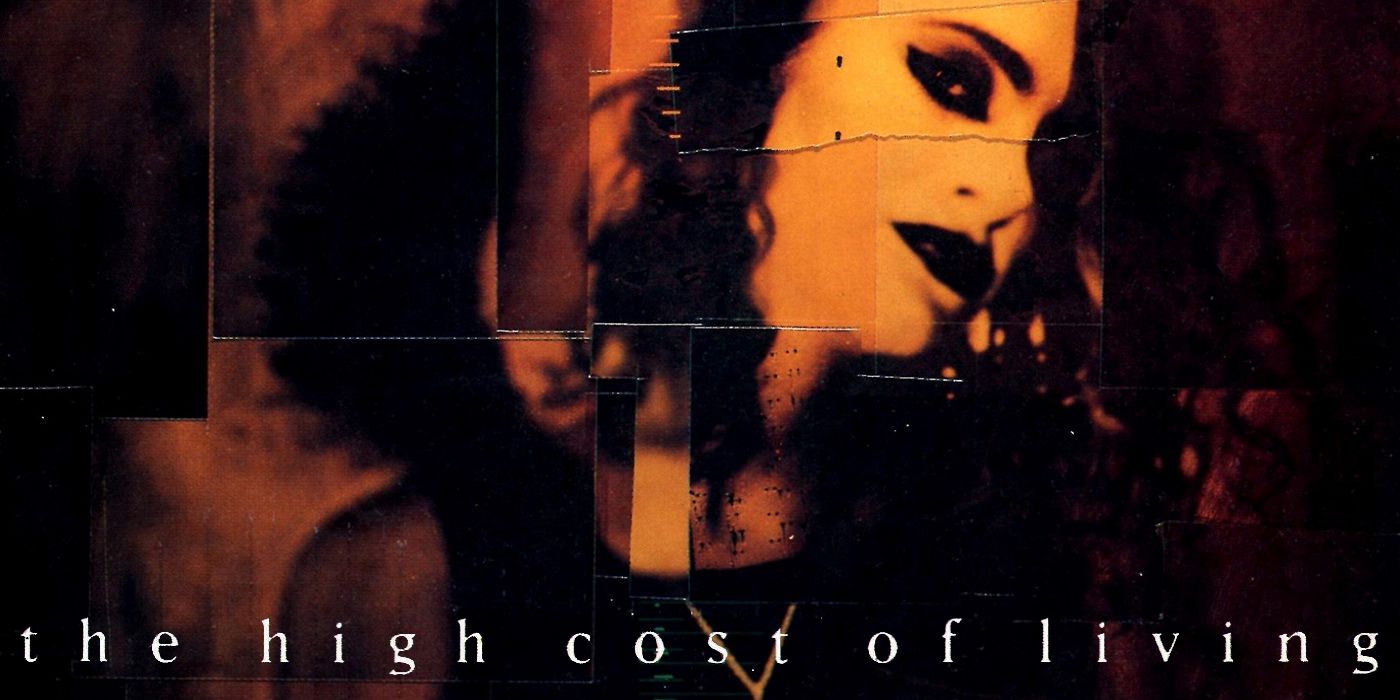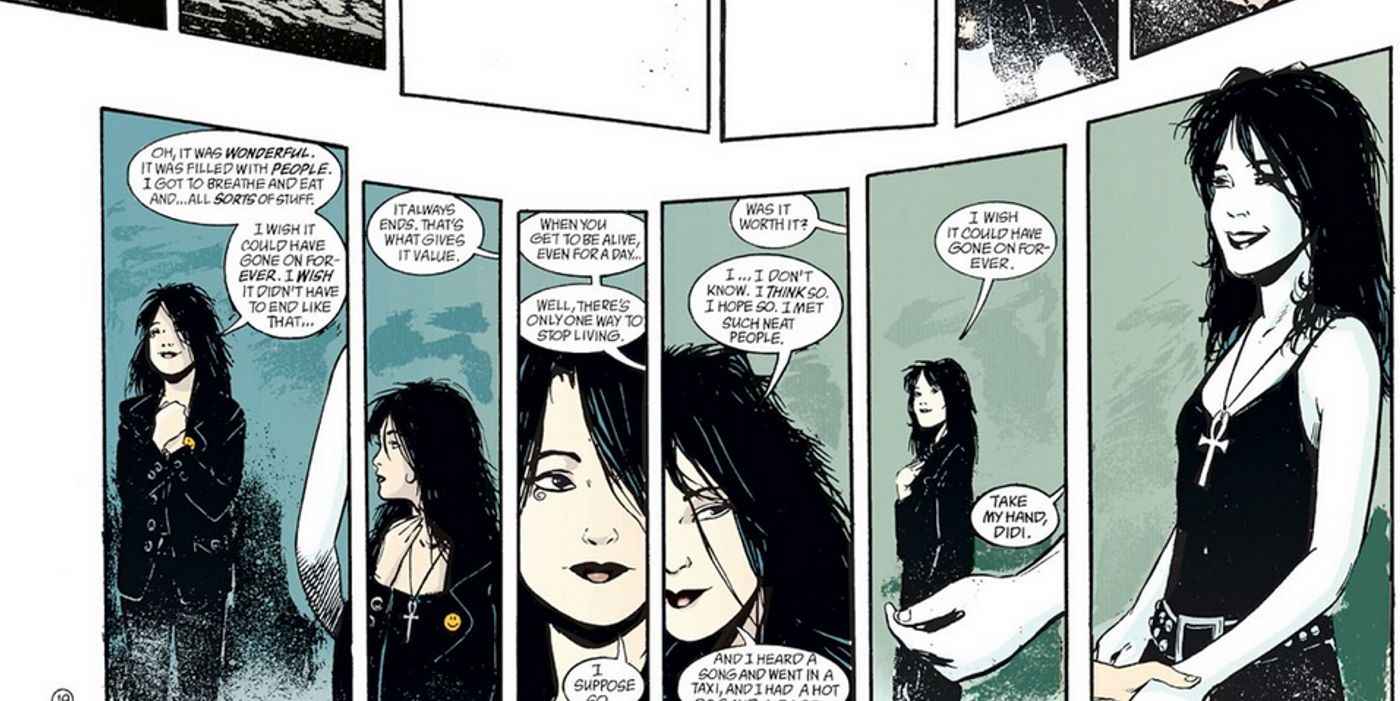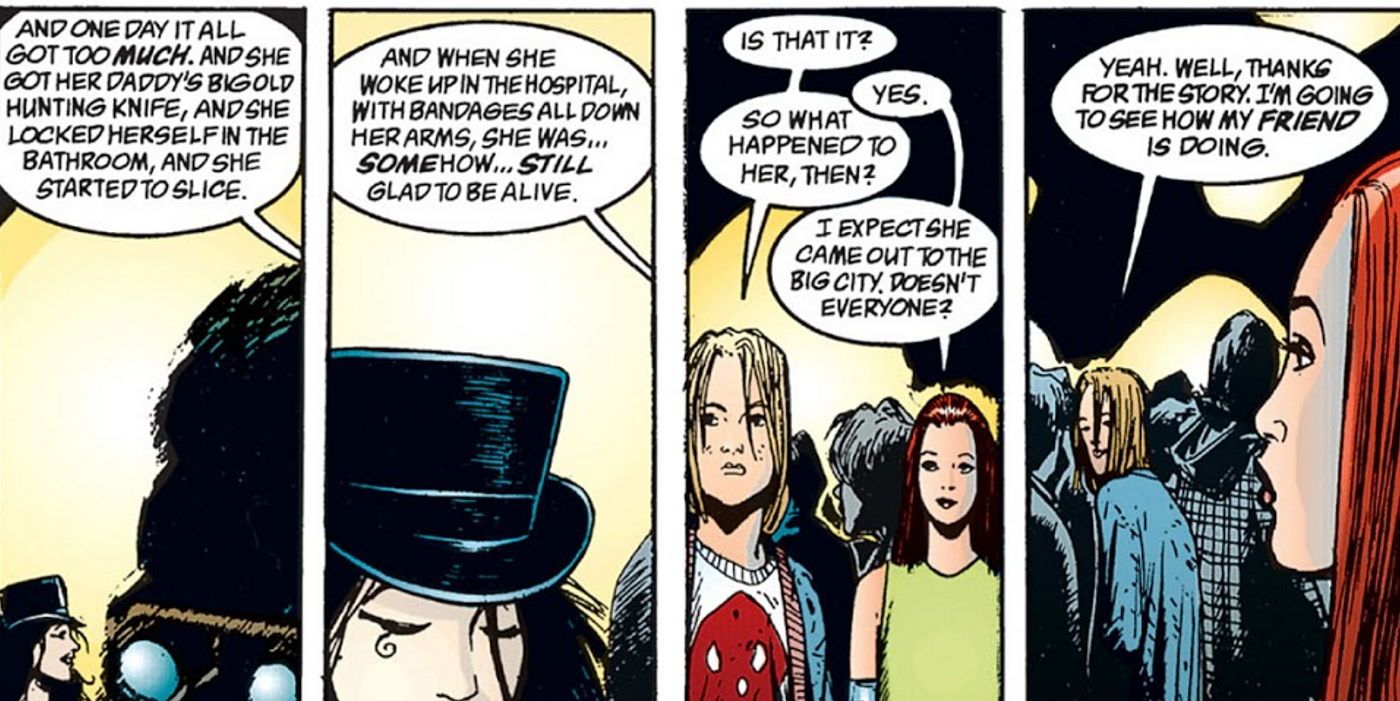These days, comic books appeal to a wide variety of age groups and deal with multiple sensitive topics. But back in the 1980s and 1990s, there was still a taboo against mainstream comic book companies producing comics specifically aimed at adults – which is why it was such a big deal when bestselling author Neil Gaiman wrote some of DC Comics first official adult comics for its Vertigo label.
To be clear: “adult comics” in this case simply means any comic books that deal with topics requiring a more mature level of understanding. While such comics can showcase more explicit sex, nudity, and graphic violence than mainstream comics, the material does not have to be gratuitous. Gaiman shows this brilliantly in his miniseries Death: The High Cost of Living, a three-issue comic book series that doesn’t shy away from taboo topics such as suicide or child abuse – but doesn’t celebrate or wallow in them either.
The miniseries was part of DC Comics’ new “Vertigo” imprint which allowed some existing comic books as well as some new material to be published for a more mature audience. The comic books included Swamp Thing, Shade: The Changing Man, and Gaiman’s own Sandman title. Death: The High Cost of Living was actually a spin-off of Sandman as it starred a character from the comics – Death, the sister to Sandman (aka Dream).
Unlike traditional physical depictions of Death that show the character as an unforgiving, grim reaper, Gaiman’s version is a friendly, pale-skinned woman who delights in experiencing all of life’s mundane wonders. The miniseries actually covers a special day in Death’s existence where she assumes a mortal form for twenty-four hours just to reconnect with humanity. Accompanying Death (now called “Didi”), is Sexton Furnival, a suicidal New York teenager whom she runs across at a garbage dump. The two travel through New York looking for the hidden heart of “Mad Hettie,” an apparently 250-year-old bag lady, even as dark forces seek to manipulate Death for their own ends.
It sounds weird and macabre (and it is) but Gaiman also infuses the story with an ethereal wonder that makes the reader look at death and life with new eyes. Because Death has existed for so long, she treats everyone, from cab drivers to murderers, with an endearing kindness. As she sees it, once you know a person well, it’s impossible to be mad at them – and Death gets to know everyone well… eventually. Amusingly, practically everyone who encounters Death treats her well by giving her free rides and food. Yet these actions aren’t done out of fear but happiness – as most who encounter Death see her as a great friend.
Granted, there are dark aspects to the tale – including one where Sexton meets a pretty teenager who relates a tragic story about a friend who was sexually abused as a child and nearly died by slashing her own wrists (considering the teen is wearing long gloves, it’s likely she was the girl of her story). At one point, Death and Sexton get abducted and imprisoned by a blind man who wants to control Death for a strange and tragic, reason. Yet even here, Gaiman shows hope – the teenage girl admits that after surviving her suicide attempt, her friend was happy to be alive and Death’s abductor ends up paying her a grudging respect when his attempt to control her fails.
By the end of the story, Sexton acquires a greater appreciation for life although he admits he doesn’t have all the answers about his strange day with Death. It’s a bizarre tale, but one told with Neil Gaiman’s trademark charm and fantastical atmosphere – and one that proves adult comics can deal with death and violence in a manner that offers readers an experience that is oddly uplifting – even transcendent.



